
[322] Spatula clypeata, Shoveler
Introduction
Spatula clypeata, the Shoveler, until recently known as Anas clypeata, is a winter visiting duck with a shovel-like bill which it uses somewhat like [272] the Spoonbill.
There are four geographically separate closely related species of Spatula that are called Shovelers. Spatula clypeata is the Northern Shoveler but in the UK, it is only ever called a Shoveler.
(Confusingly, some species of Spatula are called Teal, in common with several other species of ducks still in the genus Anas.)
Taxonomy
Kingdom – Animals
Phylum – Chordates
Class – Aves (Birds)
Order – Anseriformes (Waterfowl)
Family – Anatidae (Ducks, Geese and Swans)
Subfamily – Anatinae (Dabbling Ducks)
Tribe – Anatini (All extant Dabbling Ducks)
Genus – Spatula
Scientific Name – Spatula clypeata
Until 2009 it was Anas clypeata.
Name
We looked at ducks and the genus Anas in [023] Mallard.
The Latin clypeata or clipeata means armed with a shield. Spatula or spathula is a diminutive of spatha, meaning something broad and flat. (Shovel has the instrumental ending so it means something used to shove.)
Description
Like the well-known Mallard, the male Shoveler in breeding plumage has an iridescent dark green head. The rest of his body is mostly chestnut brown with white neck and breast.
The female bird is mottled brown like many other ducks and in winter the male looks similar.
Male and female are both easily recognized by the large flat bill that gives them their name.


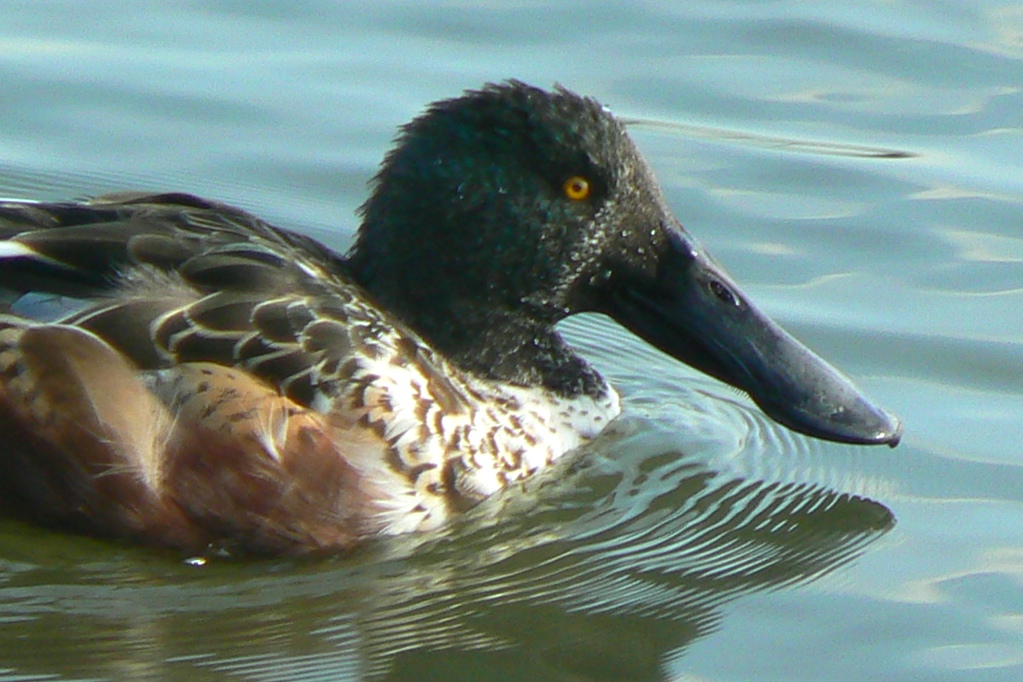
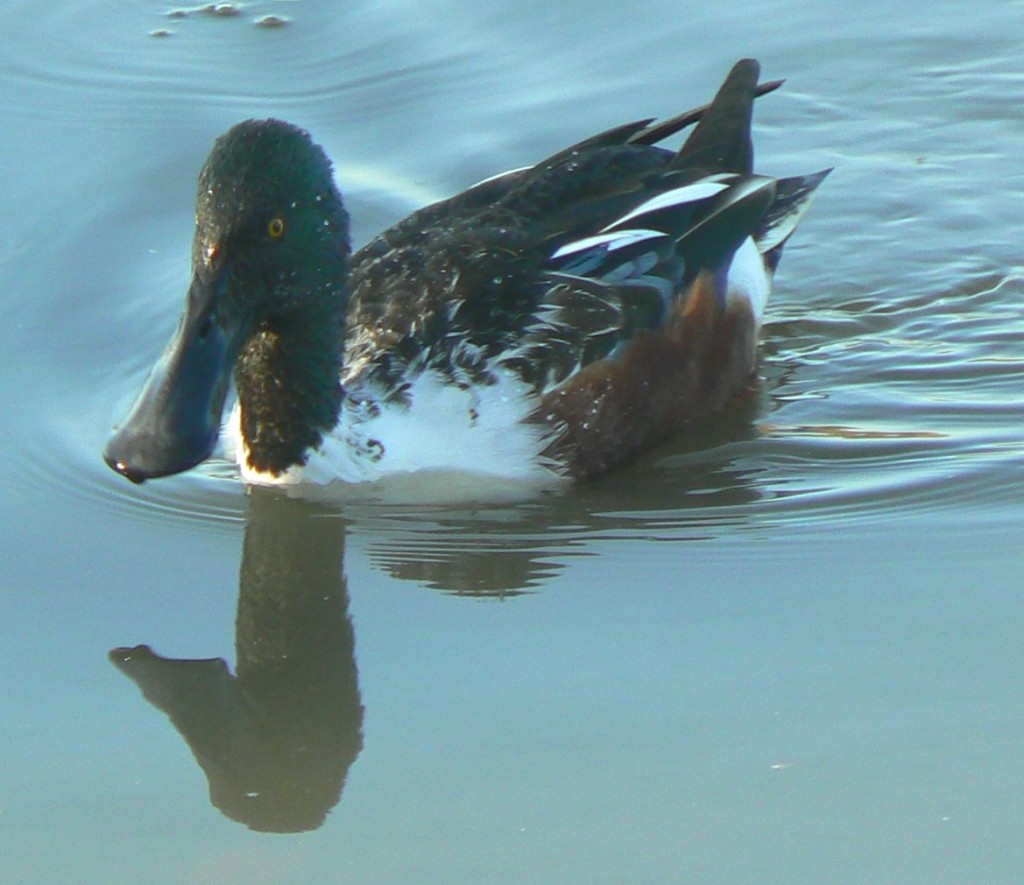


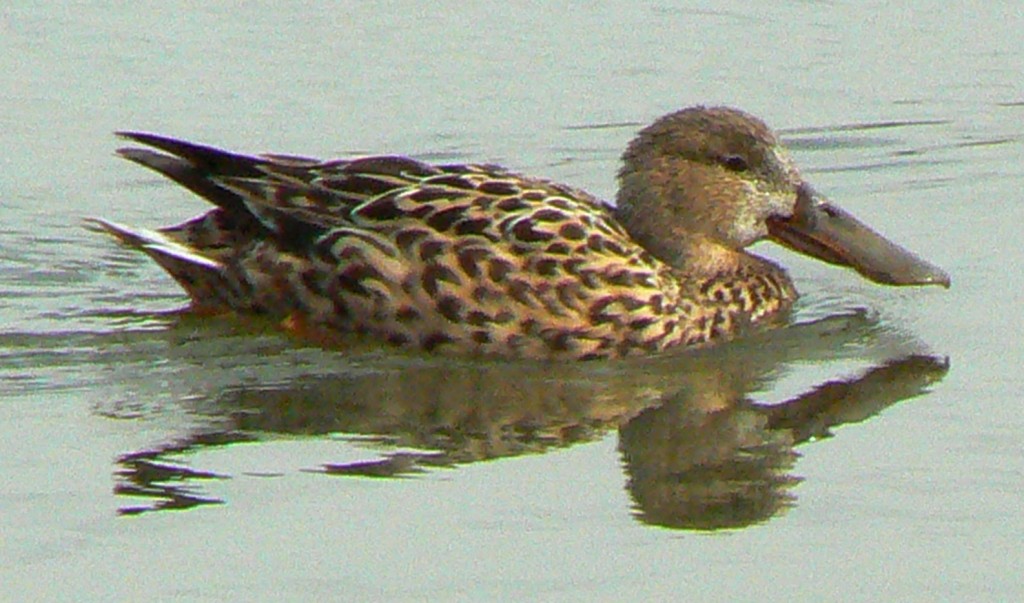

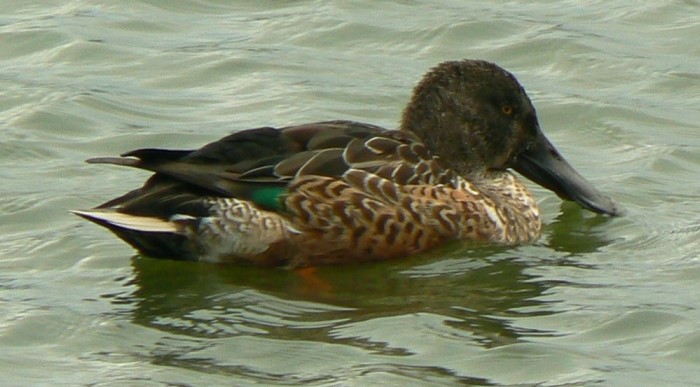
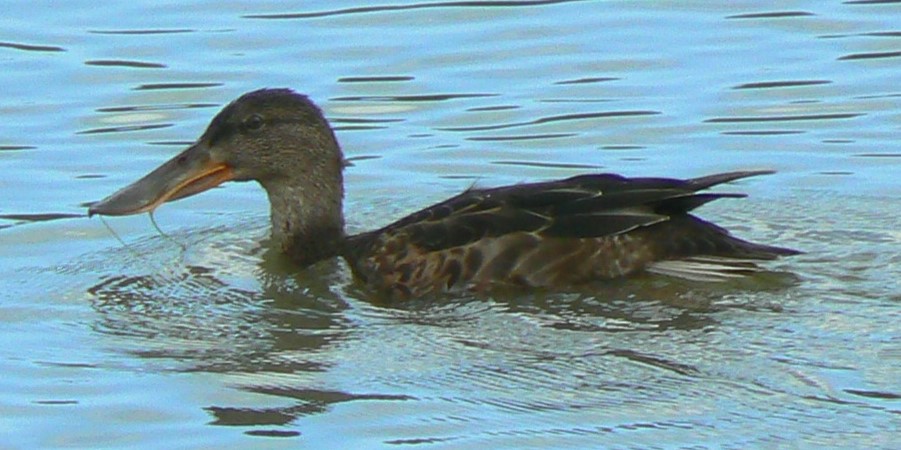

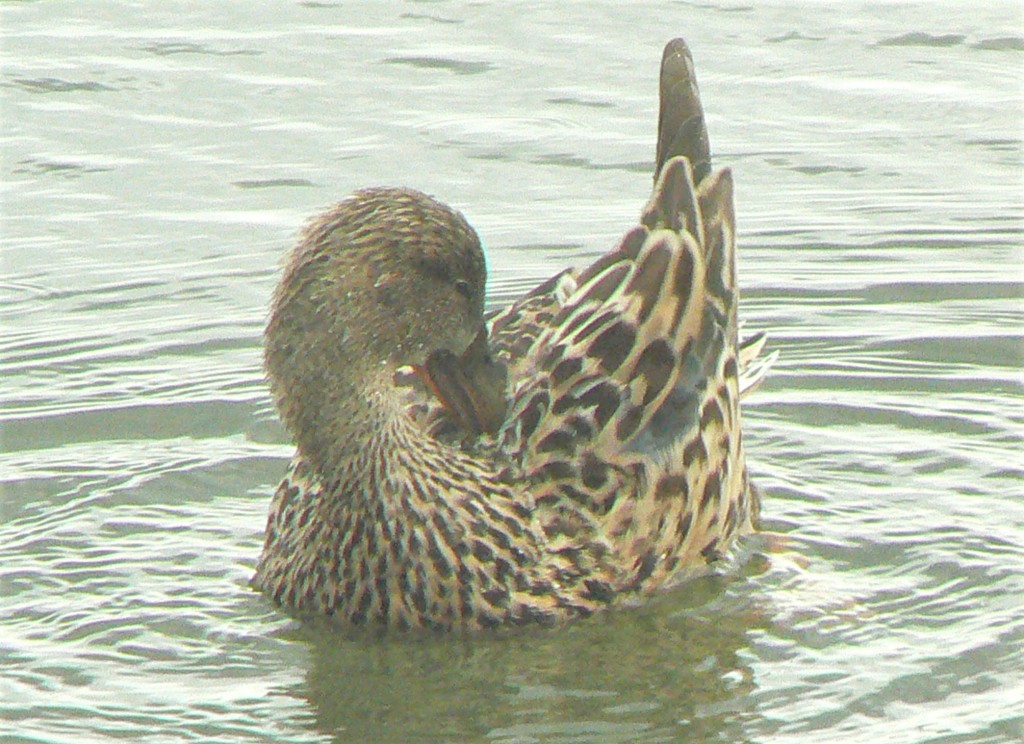
Habitat
The breeding (summer) range of this bird covers much of the temperate Northern Hemisphere and they generally winter in more tropical areas. For the UK, generally in the south, and various parts of Europe they are winter visitors.


Other Notes
You won’t see Shovelers on public ornamental lakes but you can get some close views at places like Slimbridge WWT. You can see them for part of their visit still in breeding plumage.
See also
Spatula querquedula, the Garganey, is a much rarer visitor to the UK. I think I have seen two in many years of birdwatching. From a distance with binoculars the white stripe on its head may help identification.
